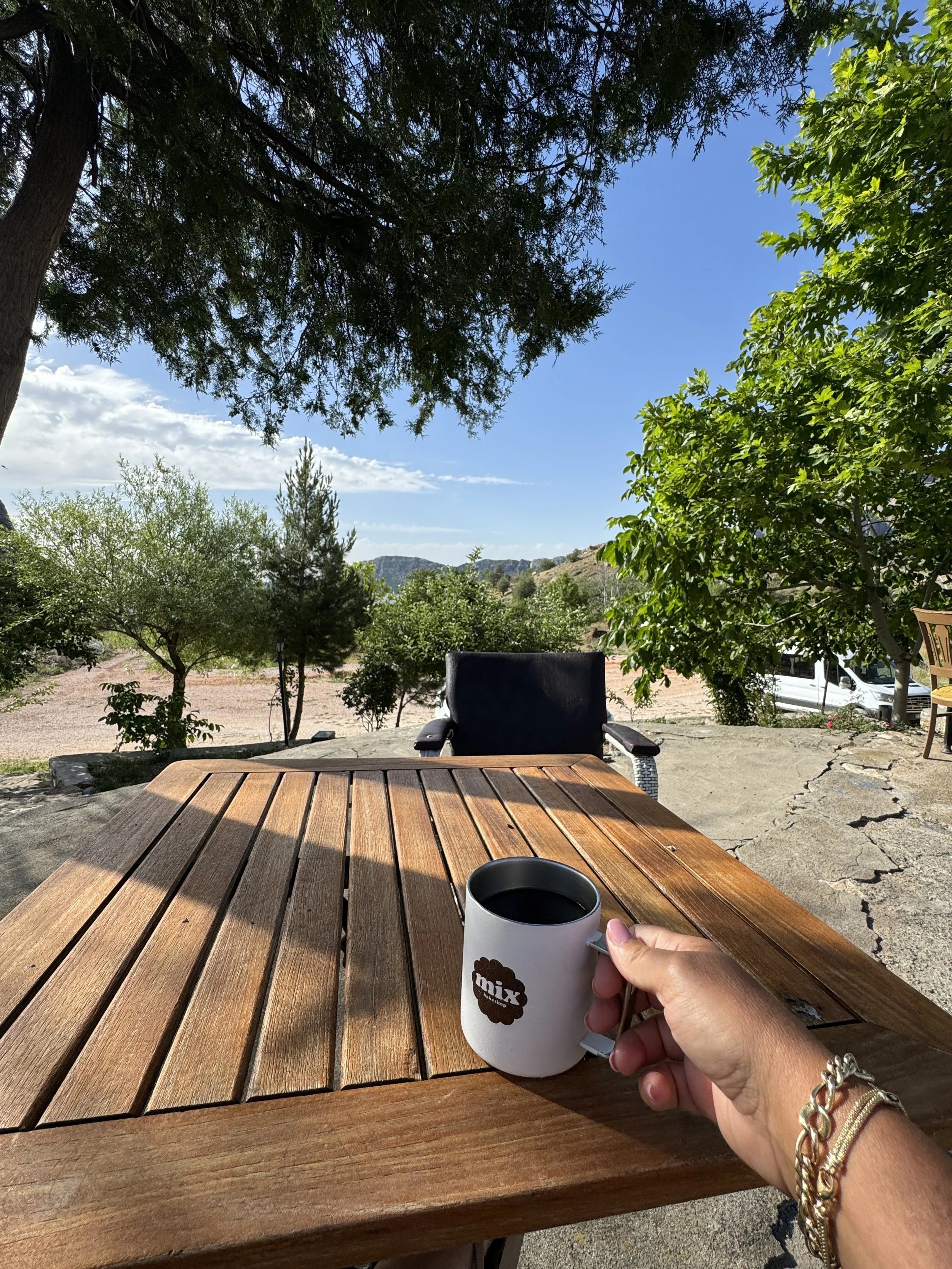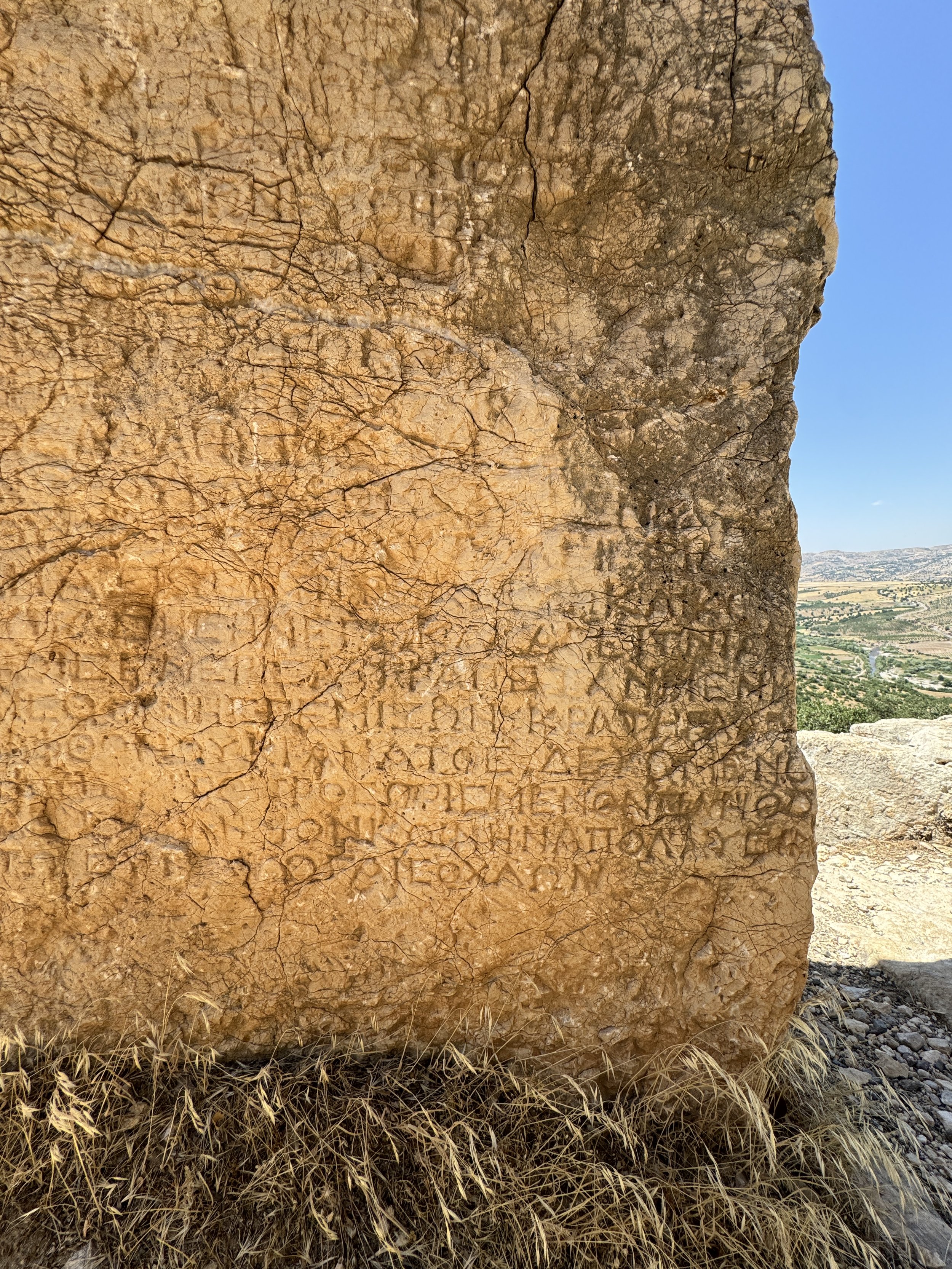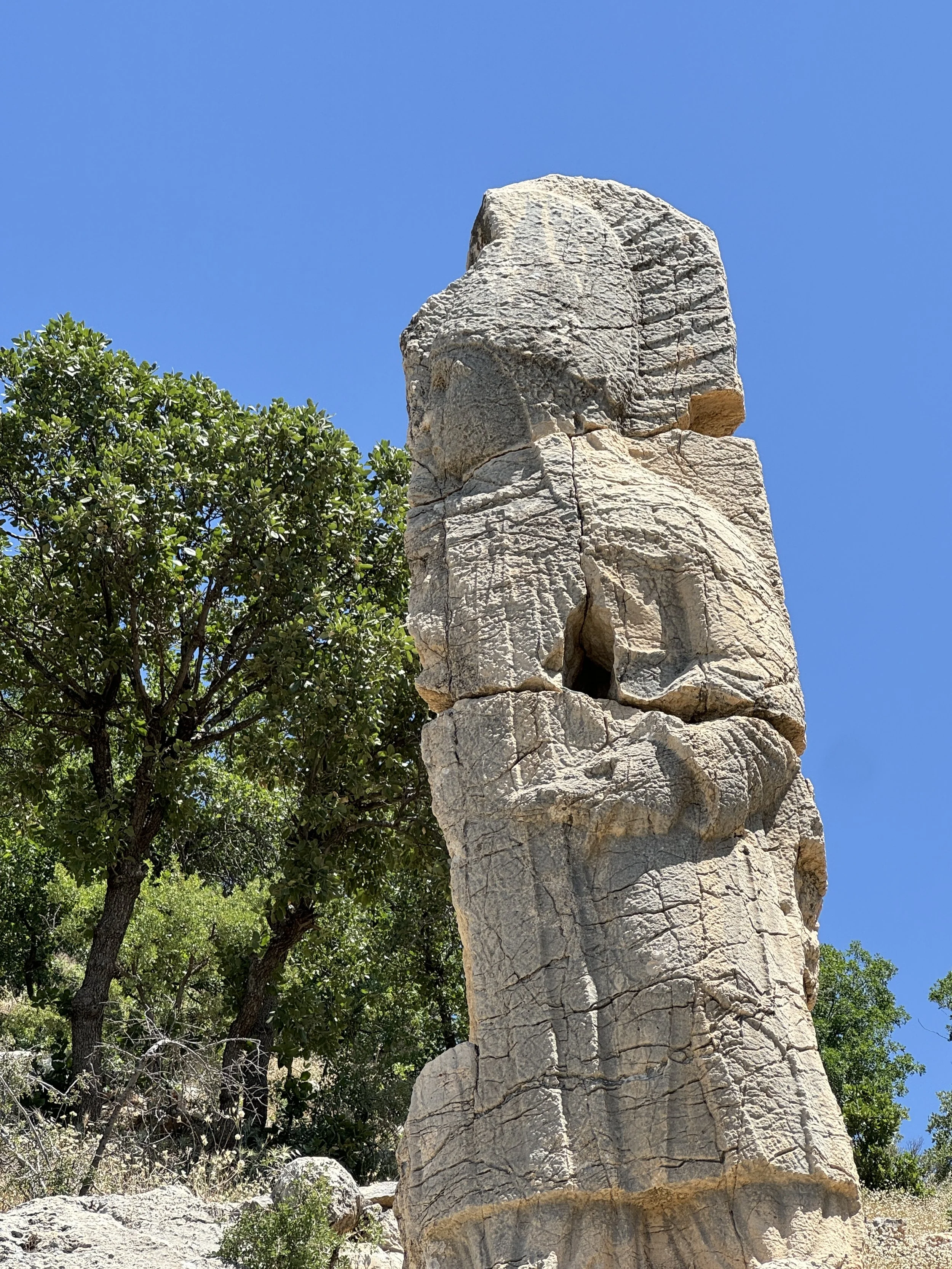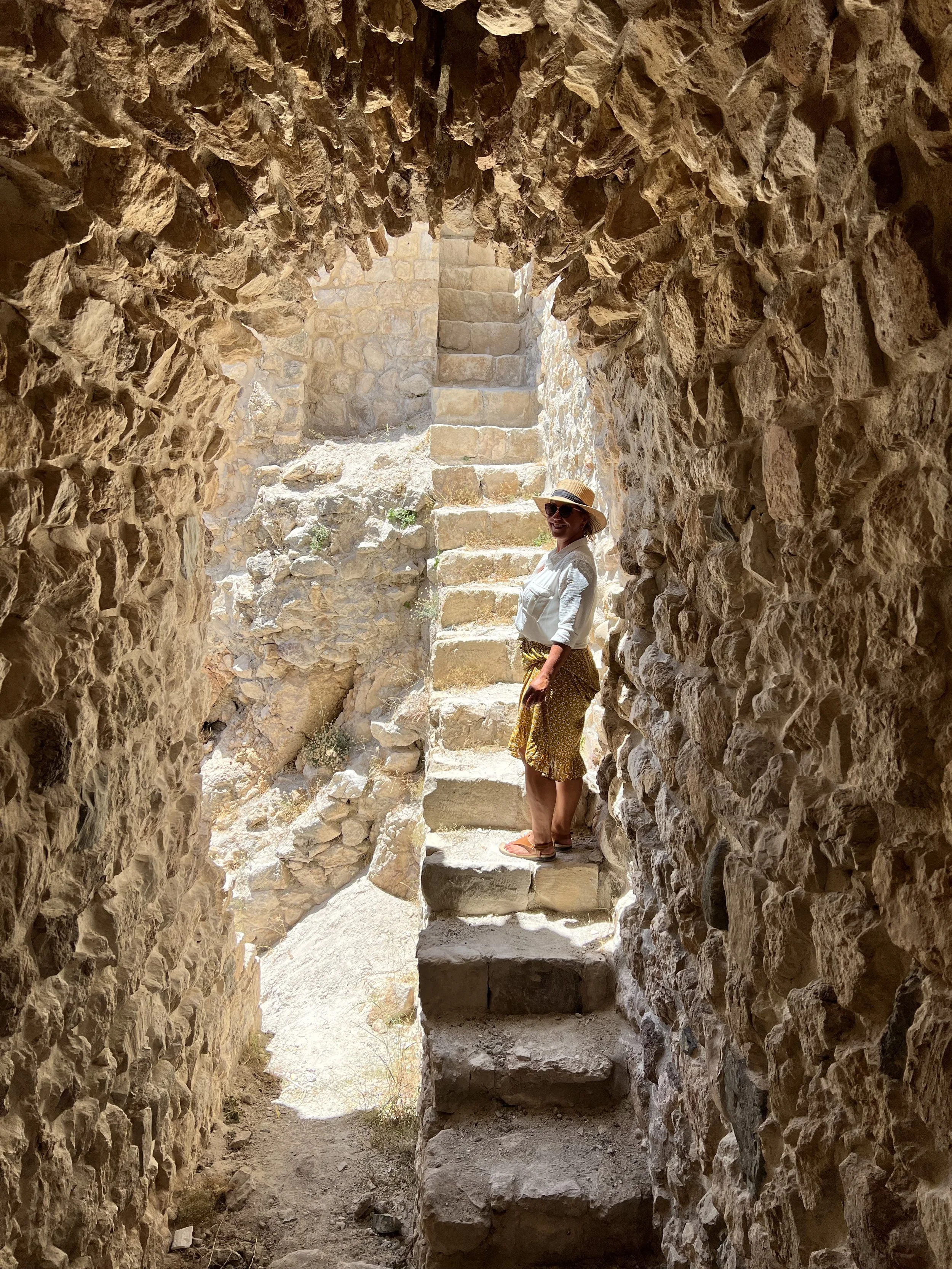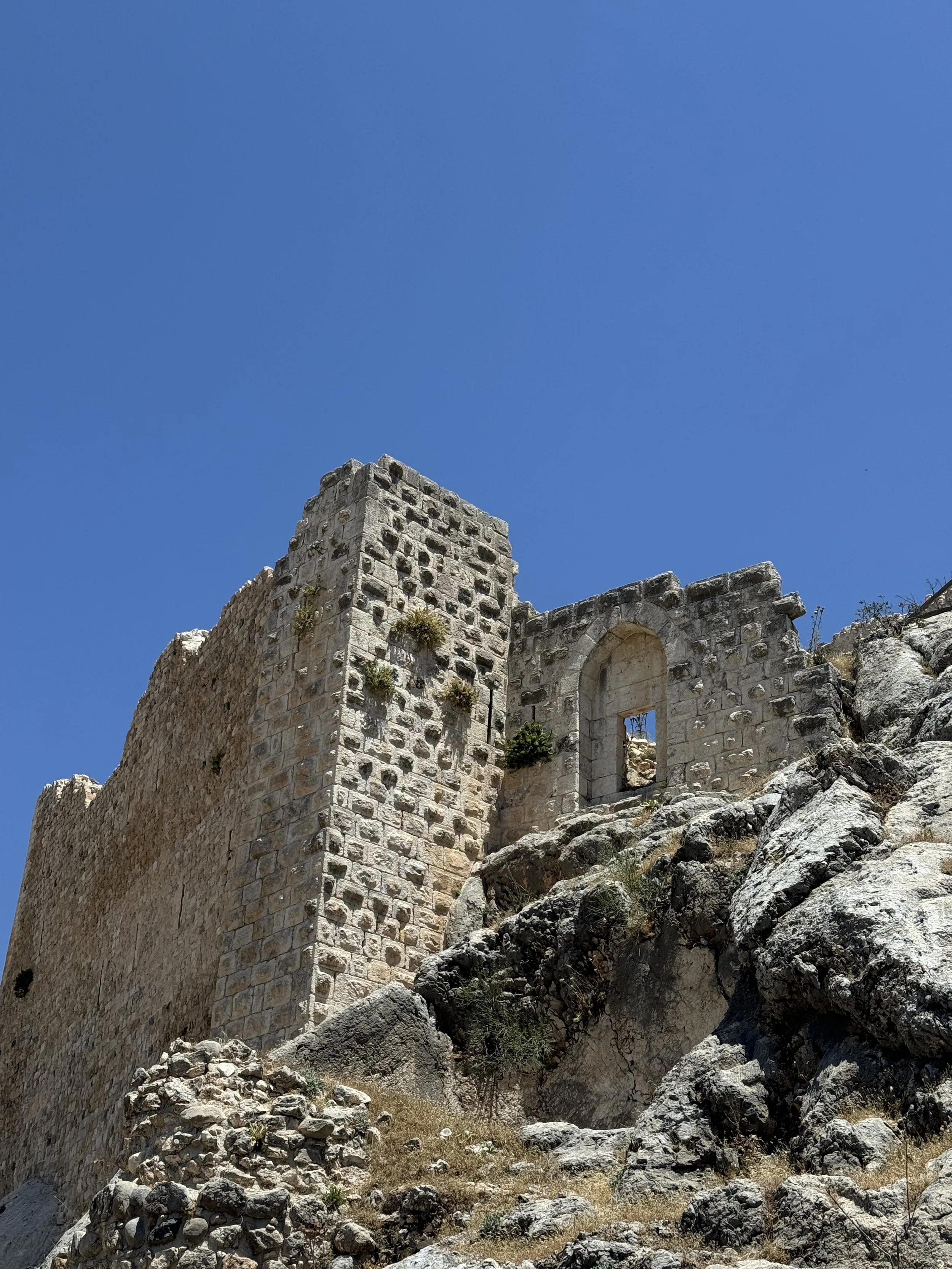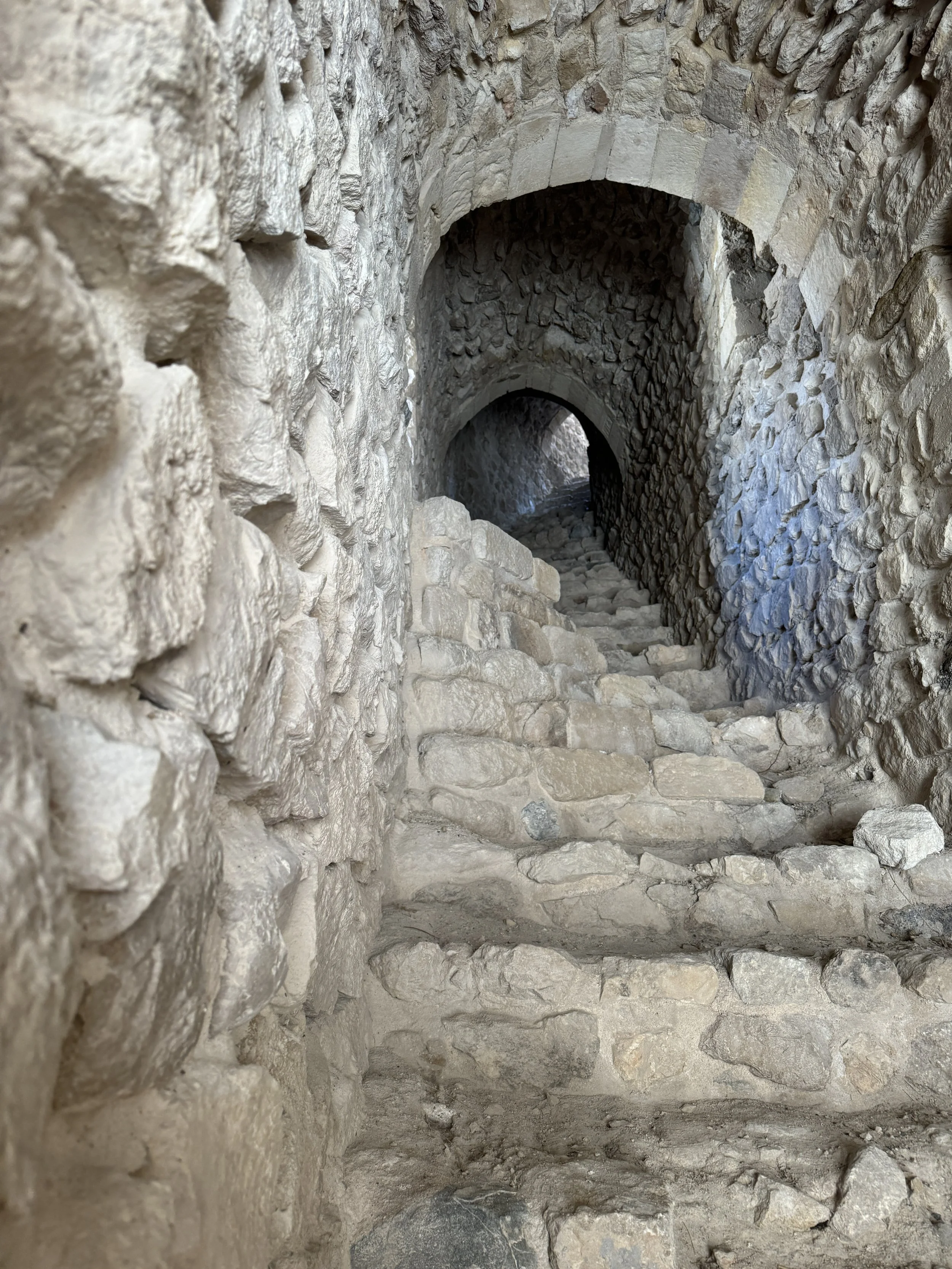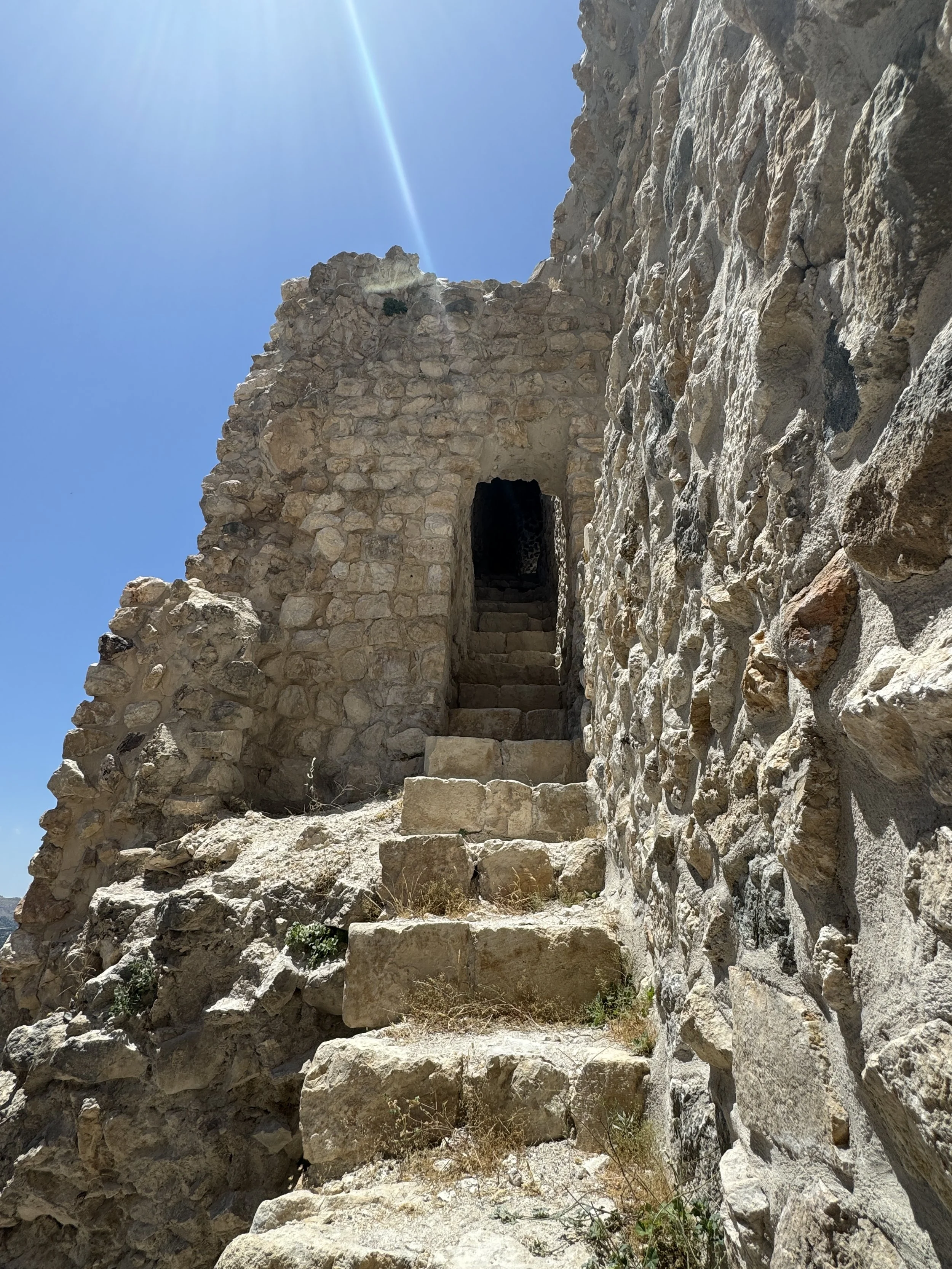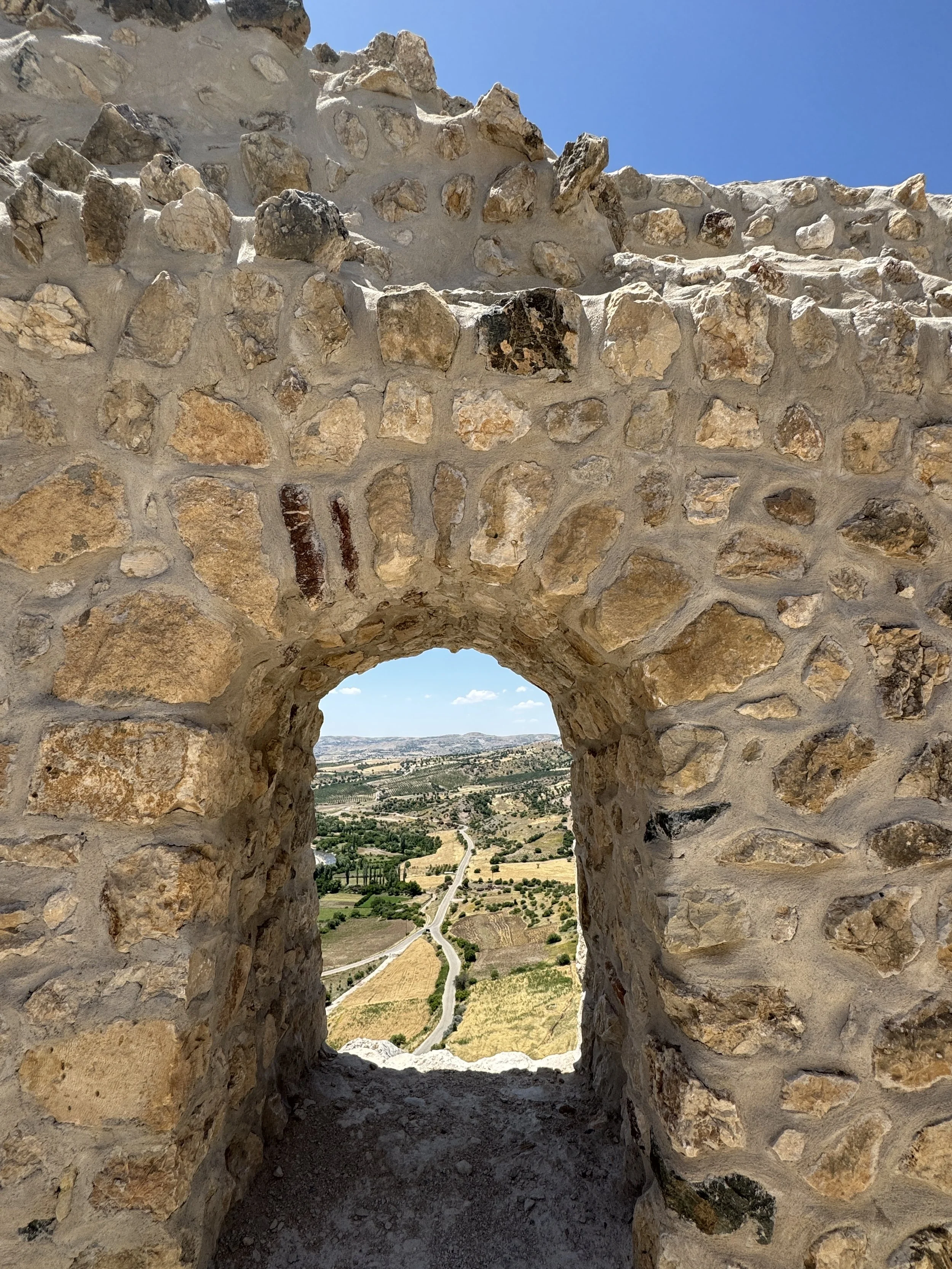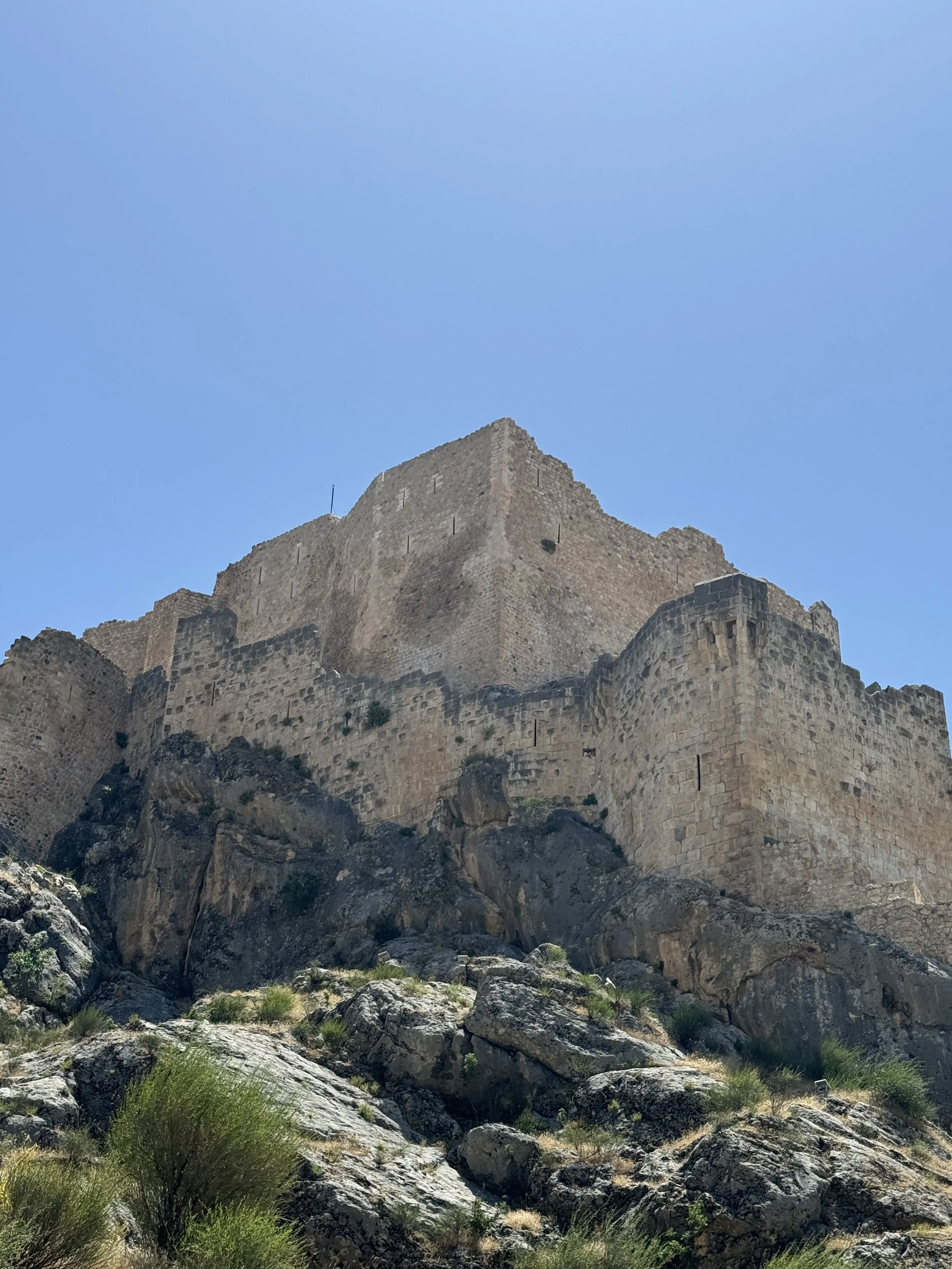Türkiye - Day 5: Nemrut Dağ to Şanlıurfa
Kahta Castle, Türkiye - All photos © Rose Cameron 2024 Unauthorized use, reproduction, or distribution is prohibited.
This post may contain affiliate links. We may earn a commission at no extra cost to you. More Info Here
“And above all, watch with glittering eyes the whole world around you because the greatest secrets are always hidden in the most unlikely places. Those who don't believe in magic will never find it." - Roald Dahl
Dawn greeted us slowly, I made coffee in our room (see our travel setup here) and moseyed into the garden to trickle a little internet connectivity to my phone. A mama cat weaved her body around the chair legs as birds flitted across the blue sky. It’s pretty here in the way little mountain villages are - everything seems larger than life - the rocks, the sky, the clouds, the trees. A woman walked her cow through the garden to a milking station, no question that everything from the yogurt to the cheese and the cream would be exceedingly fresh. Z joined me and we enjoyed a traditionally full spread of breakfast - apricot jams, fresh churned butter, creamy kaymak, a variety of local honey, eggs, fresh vegetables, freshly washed green herbs, steaming coffee, fruit, tea, fresh baked bread and on and on!
Our goal today is to get to Şanlıurfa - our first home base for SE Turkiye that will allow us to venture so far back in time that we will breeze past thousands of years at a rapid rate - Abraham’s Pool, cave, Jacob’s well, and all the way into the earliest known monolithic structures made my man over 12,000 years ago at Göbekli Tepe. It’s about 3.5-4 hours straight to Şanlıurfa so we decided to add in some of the beautiful historical sites near Arsameia and I am so glad we did!
The Ruins of Arsameia
The ancient ruins of Arsameia are located on the Nymphaios! Founded around the 3rd century BCE by King Arsames I, this historical gem served as a summer capital and sacred site for the Kingdom of Commagene and is a part of the Nemrut Dağ massive archaeological complex. The ruins include notable bas-reliefs and inscriptions. One of the most famous inscriptions is found in a long tunnel that leads to an underground chamber. This inscription, written in Greek, is the largest of its kind in Anatolia and provides details about the city’s foundation, religious practices, and the lineage of the royal family. While the tunnels are currently closed, we were stunned at the size and quality of the massive inscriptions and bas-reliefs. One of the most significant sculptures at Arsameia is the relief depicting the god Mithras, which reflects the syncretism of Greco-Persian religious traditions. I honestly preferred the one that depicts King Antiochus I shaking hands with Heracles (Hercules). This relief is one of the most well-known images from the site and symbolizes the divine favor and connection that Antiochus believed he had with the gods. The blend of gods and men along with the ongoing combination of cultures is truly a testament to what must have been quite a modern kingdom. I will never lose my sheer wonder that you can go right up to these treasures and see them - and that there is no damage, graffiti or trash.
Kahta Caste - In My Top 5 Favorite Castles in The World
What a fun subheader to write - I have a list of favorite castles! When Z and I first started dating he told me stories of faraway places, dreamy castles to write in or have a coffee - he promised to show me castles all around the world and has not let me down yet! Kahta Castle is recently reopened and newly renovated after the earthquake that hit the region and a tragic accident. As we drive up the winding road towards the castle, we can see it’s massive walls jutting into the blue sky. We park and a nearby restaurant owner comes up, eager to have us try his food. The region has suffered a bit due to lack of tourism and they need any influx of money they can get. We promise to return to his shop to buy things and head up.
The castle has a rich history that dates back to the ancient Commagene Kingdom and is strategically positioned on a hill overlooking the Kahta River. It served as a military stronghold and a watchtower to protect the nearby capital, Arsameia, and its surroundings. During the Roman and Byzantine periods, the castle was expanded and fortified further. The Byzantines used it as a defensive structure against various invaders, including Arab forces. The castle's strategic location provided control over the vital routes connecting the eastern provinces of the Byzantine Empire. In the medieval period, the castle came under the control of various powers, including the Seljuks and the Ottomans. Each of these powers made modifications to the structure, enhancing its defensive capabilities. The Ottomans, in particular, used the castle as a military garrison and a lookout point to monitor the movements of their enemies. Like everything here, it’s a blend of time and power, cultures and influences.
We had the entire castle to ourselves! We were able to walk in and up and around and through various areas - cisterns, dungeons, mosques, where the armory would have been, up on top of the castle to peer out through arrow slits and defensive positions. From every window and castle wall, sweeping views unravel of the hillsides below. There would have been no question who was in charge and how mighty they were, and who was coming to attack!
Driving to Şanlıurfa
We swing by the restaurant owners shop and pickup waters and gifts - he’d love for us to stay and have çay and food but it is a work day and we have to get to Şanlıurfa in good order after dilly dallying at the castle longer than anticipated! The road takes us East and South away from Mount Nemrut and towards Syria*. A massive river curls through the landscape below us. It is the mighty Euphrates! The Euphrates River is one of the most significant rivers in Western Asia, running through Turkey, Syria, and Iraq. It is the longest river in the region, stretching about 2,800 kilometers (1,740 miles). It has been a lifeline for civilizations since ancient times, providing essential water for agriculture and serving as a crucial trade route. It was central to the development of early civilizations in Mesopotamia, including the Sumerians, Akkadians, Babylonians, and Assyrians, shaping the cradle of civilization.
Şanlıurfa
Şanlıurfa, also known as Urfa, is a historic city in southeastern Turkey, often referred to as the "City of Prophets." It is believed to be the birthplace of the prophet Abraham (Abraham’s cave) and is home to several religious and historical sites, including the Pool of Abraham (Balıklıgöl) , and the ancient city of Harran (with it’s beehive homes and Jacob’s Well). The city has a rich cultural heritage, blending Turkish, Kurdish, and Arab influences. Şanlıurfa is also known for its vibrant bazaars, traditional cuisine, and proximity to the famous archaeological sites of Göbekli Tepe and Karahan Tepe. Driving in Şanlıurfa is an intense sport and only advisable for the most courageous - or leave it to a taxi driver!
We arrived at the Ala Han Boutique hotel and were delighted to find that it is directly across from the Abraham’s Pool/Cave/Urfa Castle/Bazaar complex. Depending on the season you can find rooms as low as $58USD and you are right in the main area! If you’re driving, the cobblestone approach is a bit exciting, but we have a lot of experience on narrow cobblestone roads. The lobby of the hotel is beautiful, and the staff professional and friendly. We arrived in our room just in time for a few work calls and were delighted with a view of the castle and Balıklıgöl complex. We wound up eating dinners and breakfasts at the hotel restaurant - it has a beautiful outdoor patio, fantastic food and friendly service.
Stay tuned for tomorrow’s adventures to Göbekli Tepe, the Balıklıgöl complex, and the bazaar!
*Travel Safety : As of 2024, the areas near the Syrian border have been potentially risky for visitors due to ongoing instability in Syria. Issues include cross-border violence, refugee movements, and military operations. The Turkish government has increased security measures, but visitors should stay informed about current events to ensure their safety. We had NO issues, but were aware of the potential risks and made sure to abide by local customs (including dress) in an effort to not stick out.

